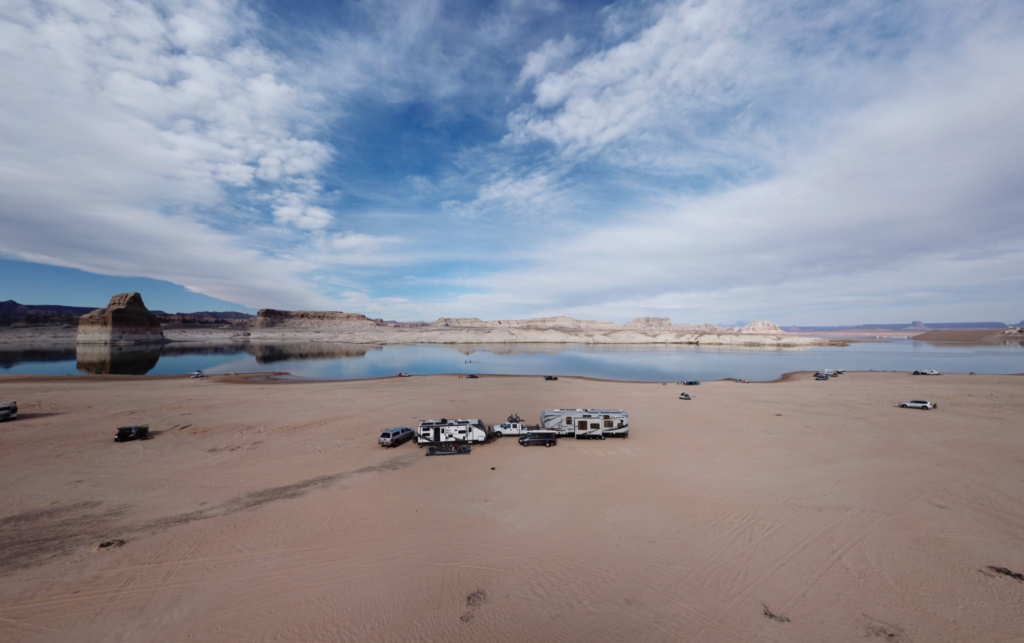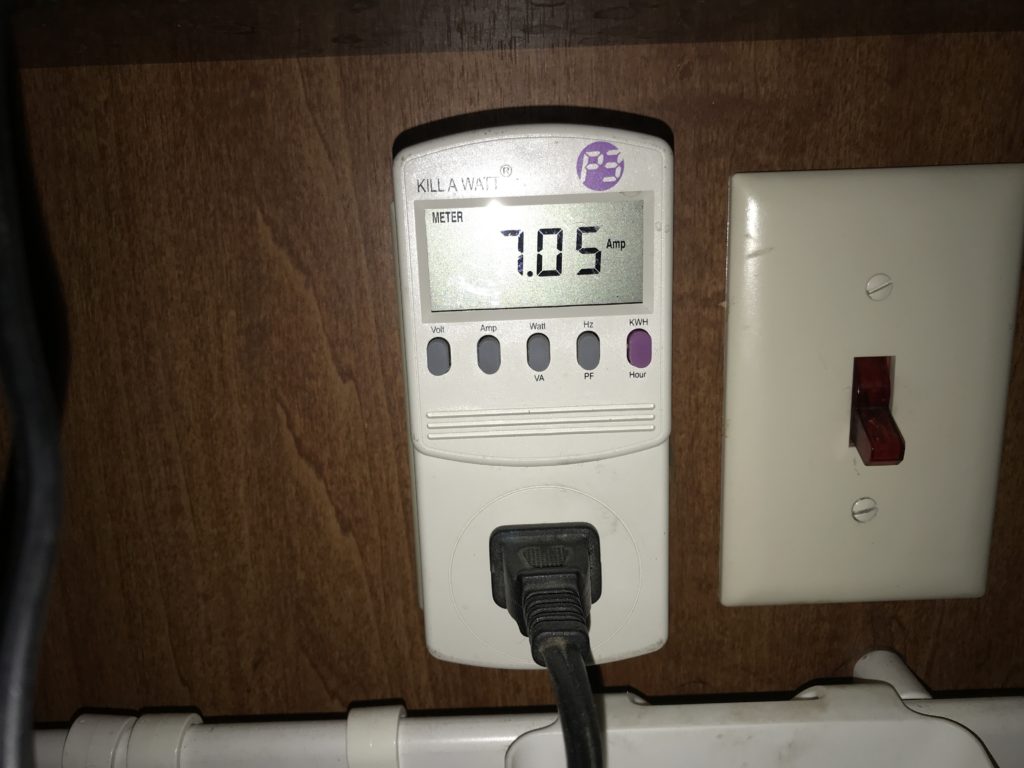Boondocking?
In the last year, we have been boondocking (living off grid in an rv) more than we have been on hookups! Through the first half of 2019 we were plugged in less than 40 out of 180 days. We did this by installing an RV solar power system.
If you didn’t know, before you go assuming that we are living in a tent, or in some sort of primitive cabin in the woods, our family of 7 is living in a 2011 Heartland Cyclone 3612 40′ Toy Hauler 5th wheel. It’s approximately 330 square feet, has 3 separate living areas and all the amenities of a traditional sticks and bricks home including a washer and dryer.
In this post I am going to talk all about how we power our RV including solar power. We plan to write additional posts about the other aspects of boondocking, but this one is all about electricity and how we store it. Just so you know, this post does include affiliate links!
How do we power our RV?
Our RV came from the factory with a single 12v 90 Amp Hour battery and an Onan 5500 watt Generator to power its 12 volt & 50 amp systems. The generator is huge, and can power everything in the RV including the AC units.
Originally when we were plugged in or running the generator, everything in the RV works. When unplugged and the generator not running the 12 volt system would power the hydraulics for slides and jacks, the lights, the furnace, water pump, electrical boards for the fridge and water heater to run on propane and a couple of 12 volt barrel (cigarette lighter style) outlets. That isn’t much for a family of 7 living their life.
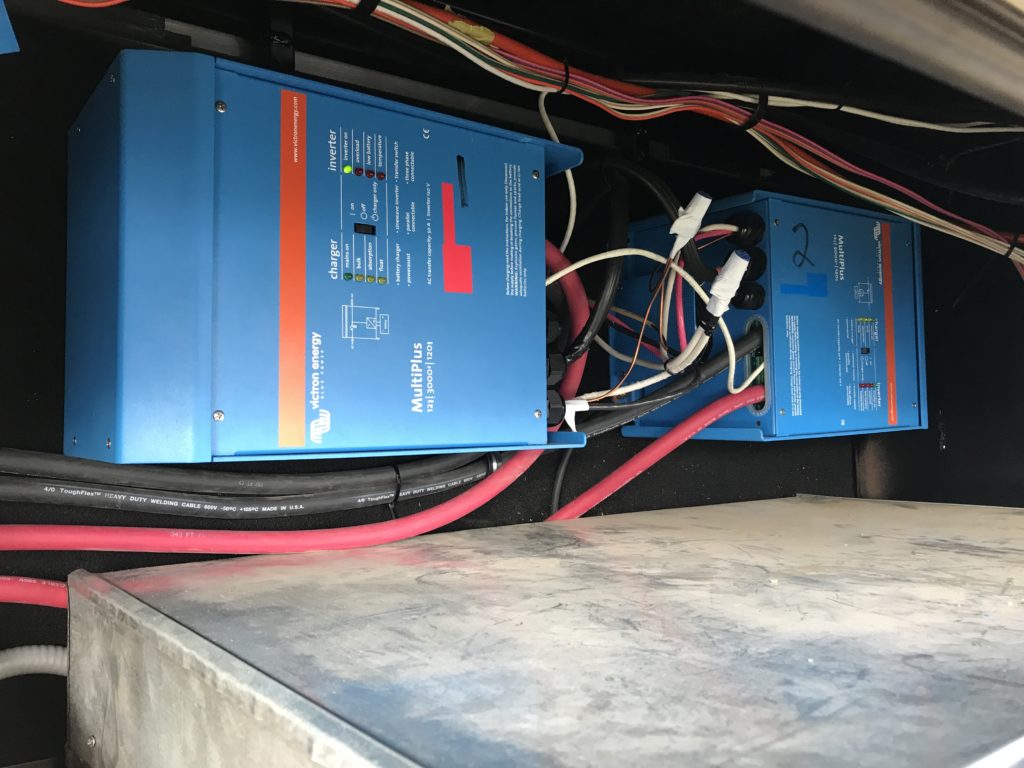
Victron Multiplus 12/3000/120-50 120V Inverters 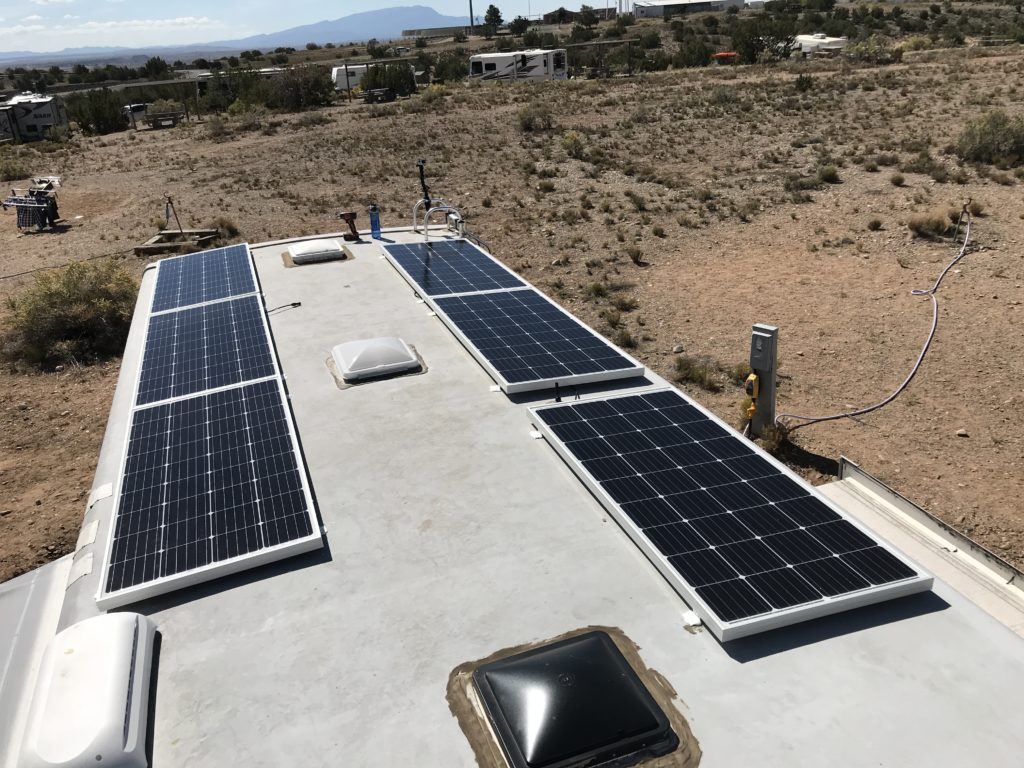
To make our home more electrically independent, in the fall of 2018 we added a pair of Victron 3000 watt inverters, 1200 watts of HiTech solar panels with 2 50 amp charge controllers and 4 X 6 volt Trojan T105 golf cart batteries for a battery bank. We have a post all about that system, click here to see that post> https://www.roadschool.com/our-solar-set-up-explained/
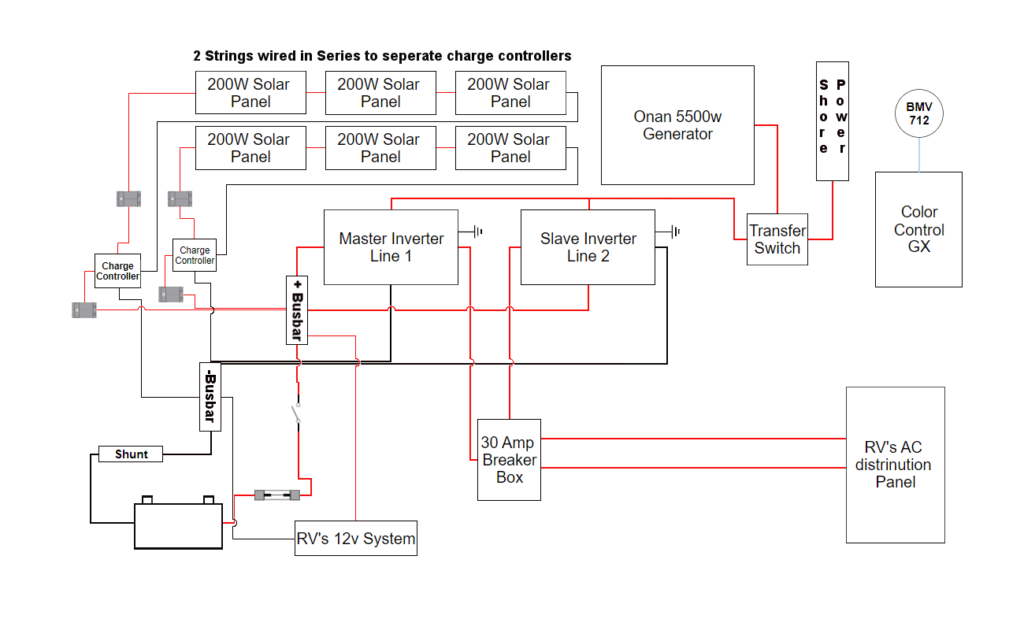
Our system: https://kit.co/Roadschool/our-solar-set-up
What are we powering?
The first thing we did was an energy audit. We bought a Kill A Watt electricity usage monitor from Amazon and started testing the electrical appliances and devices in our RV to measure our usage. We got ours on Amazon.
You need to test everything you use (or plan to use) regularly such as:
- Coffee Maker/Hot water kettle
- Microwave
- Residential Fridge (if not able to run on propane)
- Instant Pot and other electrical kitchen gadgets
- Laptop chargers
- Washer and dryer
- Any 110 volt electrical device you will plan on running regularly
Some things you don’t really need to check are:
- Refrigerator if it runs on propane. They do consume a little bit of electricity for the 12 volt system to run fans and what not, but not enough to really matter.
- Propane water heater is the same as the fridge, although it uses some electricity for the control board, its not much.
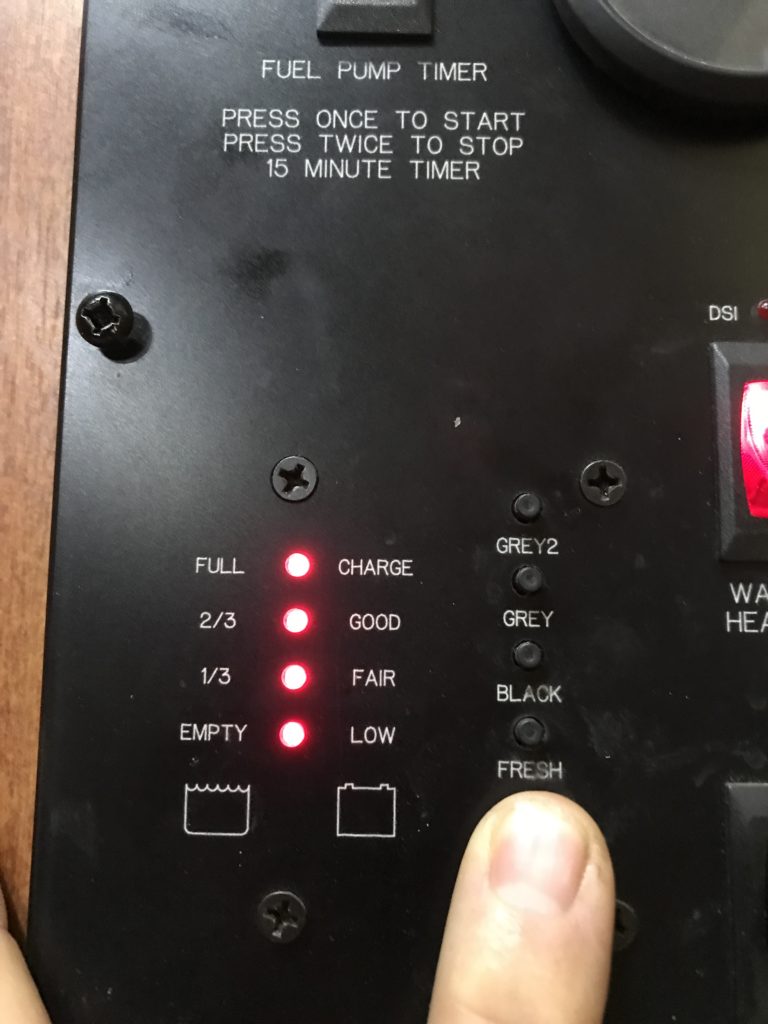
Once you have an idea of what your usage is, one of the first components you should get is a battery monitor. Our RV, like most, came with a little button you can push and it gives you the battery level in increments of 3rds. These are very basic, and more like a dummy light that will tell you if your battery is dead, but doesn’t really tell you what the level of capacity is in your battery bank. We went with the Victron BMV-712 Smart Battery Monitor. Check out on Amazon.
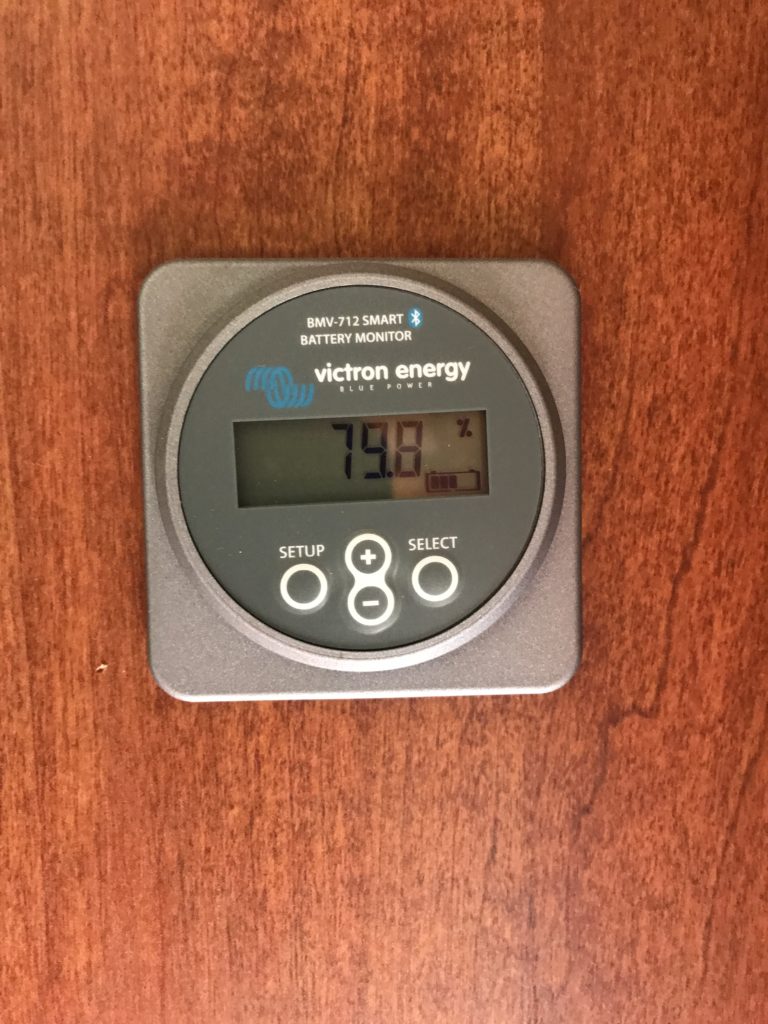
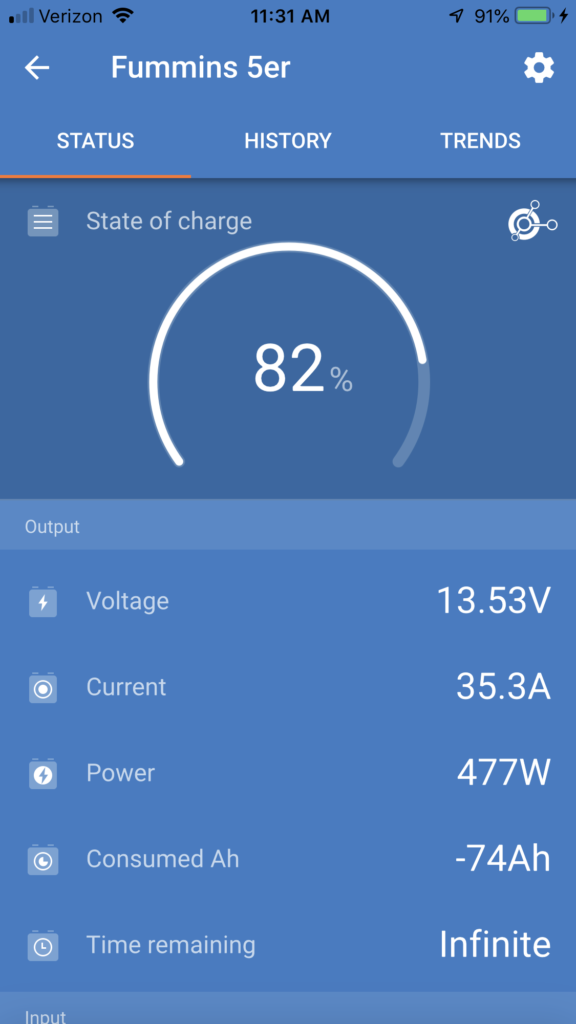
This comes with a shunt and it measures all energy coming in, and going out of the battery bank. I want to throw out a little disclaimer, this device does not actually know how much energy is still in the battery bank, but after you configure it to your bank, it measures all of the energy coming in and going out to give you an accurate estimate of the level of capacity. This monitor is great because once you download the Victron Connect app to your smartphone, you can check its wirelessly. I used Victon components for my entire solar system, all of the pieces are networked together and communicate with one another making it very easy to configure and manage.
*Before doing any electrical system upgrade to your RV, you first need to do an energy audit to estimate your usage and needs.
Our previous Battery Bank
One thing you will find that is missing in our previous solar post is much information about our battery bank. Our RV started its life with a single 12 volt deep cycle battery offering a total of 90 amp hours. That isn’t much for a 40′ self contained 5th wheel. I’m guessing that they expected us to use the generator when not plugged into shore power and/or often enough to keep it charged.
Just before our solar install, we upgraded our bank to 4 X Trojan T105 6 volt 225 amp hour deep cycle golf cart batteries.
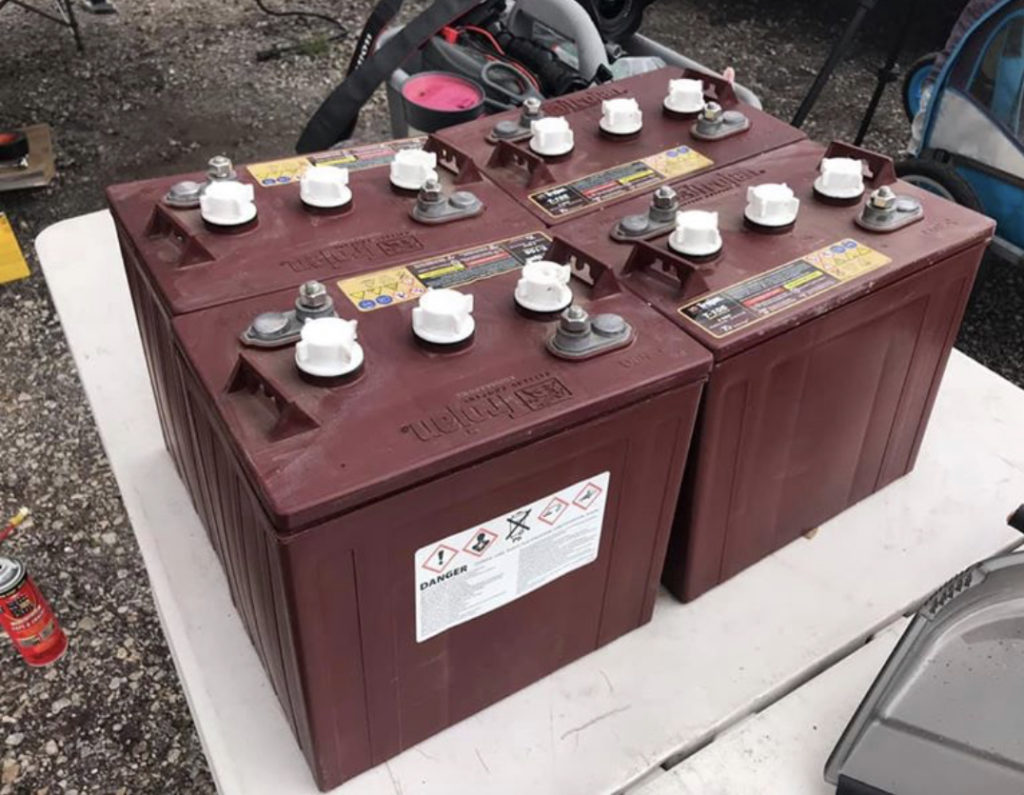
What is an Amp Hour?
There is tons of information out there about this already (nor am I an expert on the subject), so I will keep it simple for you. A battery with a capacity of 1 amp-hour should be able to continuously supply current of 1 amp to a load for exactly 1 hour, or 2 amps for ½ hour, or 1/3 amp for 3 hours, etc., before becoming completely discharged.
*If using lead acid batteries, your usable capacity is about half of the rated amount. It is not healthy for a lead acid battery to discharge below 50% and can damage the cells and shorten the life of the battery.
EXAMPLE:
- We love to cook with our Instant Pot pressure cooker. It uses 60-70 amps getting up to pressure and running for the better part of an hour when cooking beans (which we do almost everyday).
- So if using an inverter hooked up to:
- That original 90 amp hour battery, you would use more than the recommended amount of capacity in that battery cooking those beans.
- 4 x Trojan T105 bank (225 usable amp hours) we installed, Cooking the same pot of beans would result in 30-40% of the usable capacity of that bank consumed.
- So if using an inverter hooked up to:
So you can see why we upgraded to the Trojan T105s? These are 6 volt batteries, which means in order to power a 12 volt system, you must have at least 2 (or in even number quantities) and they have to be wired in series. So a 6 volt battery with 225 amp hours is really only 112.5 amp hours at 12 volts by itself, and then wired in series with a matching battery you get back to 225 amp hours (half of that is usable) for a pair. We had 4, so they were wired in series then parallel to provide a total 450 amp hours (225 usable). See the picture for an example of how our 4 batteries were wired.
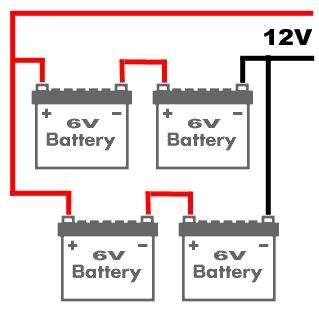
Trojan’s are great bang for buck batteries and have a proven track record within the RV industry.
The pros:
- Fairly inexpensive, costs about $150 per battery
- Very reliable, with proper maintenance they work well and have a long life
- A very common brand that has dealers around the country, a great reputation and over 100 years in business!
The cons:
- Weight, not a big deal for us, but they each weigh 62 lbs, so 4 batteries is 248 pounds in the front of the RV adding to the overall weight, specifically the pin weight.
- Lead acid do require regular maintenance. I found myself adding water about twice a month while boondocking and regularly discharging and charging.
- They have to be vented, when being charged they put off gasses that can be toxic, so where ever they are stored must be sealed, vented to the outside and provide fresh air into the space.
We used the Trojan battery bank for about 6 months and they performed very well. Our typical usage was about 200 amp hours a day, so we would potentially use the entire usable amount every day without any charging.
How do we Charge the batteries?
How long does it take to charge the bank? Charging is very similar to discharging, let’s keep it easy; if you are charging at 50 amps, and the battery is at 50% (100 amp hours) of 200 amp hours it will take 2 hours of charging to be back to 100%.
The Onan 5500 watt on-board generator with the converter charger can charge the bank at about 45 amps depending on what other loads are running in the RV. We prefer to not use the generator, as it consumes about a gallon of gas every hour it runs, it’s kind of loud and puts off exhaust that smells bad.
With our solar system, we can potentially charge at 100 amps in 100% optimum conditions but we typically see between 70 and 80 amps on sunny days. During these sunny days we can run just about anything we want without using much (if any) of the battery bank.
*We typically do not run the AC whether we are plugged in or not, but we have tested and are able to run one on a sunny day but we were not harvesting enough energy to sustain for long periods of time. From fully charged we could run the AC for about 4 hours before discharging the batteries to 0% without substancial sun.
Normally we can go through the day without worrying too much about battery levels until we get into the evenings and we aren’t able to harvest as much power from the sun. Once the sun is low in the sky, we typically try to consume less to ensure we are able to make it through the night if we will needed to run the furnace.
So as you can see, our RV has a couple alternatives for providing electricity and charging the battery bank. We came to realize that the battery bank itself was the weakest point of our system. Even though we have 225 amp hours of usable capacity, and we use about 200 a day we still felt like we were on the edge of what we would consider a safe zone.
Battery Upgrade
In the spring of 2019 we accepted a camp hosting position for the summer season in our home base area of North Western Montana that included water and sewer, but no electricity. We had been to the campground before, and knew that it is heavily treed, making our solar system much less effective than we had been experiencing in the Arizona dessert.
We had also knew all along when we installed our solar system that eventually we would be upgrading the battery bank to increase the overall capacity. The 4 Trojan T105s are good batteries, but in order to add more to the bank we would need more space. They filled the bay, and there just wasn’t room for any more especially since they would have to be added in pairs.
*You should never add more lead acid batteries to an existing bank that has been used for any significant period of time. The new batteries will take on the characteristics of the weakest battery in the bank. So if you had one weak battery in the bank, it would drag down any good ones.
So I started researching options. There are so many of them out there, your head will spin when you do a simple google search for RV batteries. Since the storage space was already at max capacity for the existing batteries, I needed to find something that would fit into the same size space but give me more capacity.
After looking around and seeing what is available and what other RVers are using for Battery Banks, we came to the conclusion that Lithium Ion Phosphate (LiFePO4) would be the best alternative.
Why Lithium Ion Phosphate (LiFePO4)?
I could go on regurgitating specs and manufacturers information, but I am going to tell you why we wanted to make the switch from lead acid to a Lithium Ion battery bank.
- Size! To replace our 4 Trojan T105s, we could fill that same space and double (or more than double) our usable capacity.
- The discharge curves are much flatter and they maintain voltage throughout the discharge cycle. I cannot and do not want to try and explain this, here is an excellent write up on this from Sean Nichols of Battle Born Battery.
- Unlike their lead acid counterparts, these do not put off any gasses, need watering and do not need venting, therefore creating more storage options. In the end I chose to use the existing space due to proximity to the inverters.
- You can charged them much faster, safer at a higher rate. You can only charge lead acid batteries at 25% of the overall capacity. And example is if you have a 100 amp hour battery, you can only charge at 25 amps and will take you 4 hours to fully charge from empty. Here is a some basic info on charging lead acid batteries:
- Lead acid batteries have 3 charging stages:
- BULK stage charges to about 80% of the recharge, wherein the charger current is held constant, and voltage increases.
- ABSORPTION stage (the remaining 20%, approximately) has the charger holding the voltage at the charger’s absorption voltage (between 14.1 VDC and 14.8 VDC, depending on charger set points) and decreasing the current until the battery is fully charged.
- FLOAT stage is where the charge voltage is reduced to between 13.0 VDC and 13.8 VDC and held constant, while the current is reduced to less than 1% of battery capacity. This mode can be used to maintain a fully charged battery indefinitely.
- Lithium Ion Phosphate charges much faster. You can charge at 50% of the overall capacity, so the same 100 amp hour at 50 amps taking half the time. The charging stages look like this:
- BULK stage charges to about 99% of the recharge, wherein the charger current is held constant (in a constant current charger), and voltage increases.
- ABSORPTION stage (the remaining 1%, approximately) has the charger holding the voltage at the charger’s absorption voltage.between 13.8 VDC and 14.4 VDC and held constant, while the current is reduced to less than 1% of battery capacity. This mode can be used to maintain a fully charged battery indefinitely.
- FLOAT stage is not necessary as Lithium Ion Phosphate does not have voltage drop as the charger is removed.
- Lead acid batteries have 3 charging stages:
What to pick?
So we knew we wanted to go with lithium, but OMG have you seen the prices? So we looked around at our options. There are several brands offering drop in replacement batteries either in the group 27 or the GC2 form. And also looking at an alternative to the drop in replacement batteries, there is always electric vehicle batteries.
We have several friends in the RV community that are using battery packs either out of a Tesla or a Nissan Leaf electric vehicles. These are definitely more cost effective, but since they are coming from wrecked cars, there is no warranty, and there are some other nuances with using one of them.
In the end, the deciding factor on why we did NOT go with an electric vehicle battery, is because to do so, we would have to change our inverters to either a 24 or 48 volt system, and buy a couple other additional components to link it all together.
What did we pick?
We decided to go with 4 of the Battle Born BB10012 100 amp hour batteries. These 4 batteries fit exactly the same as the 4 Trojan T105s that they are replacing yet they double the overall capacity of our battery bank.
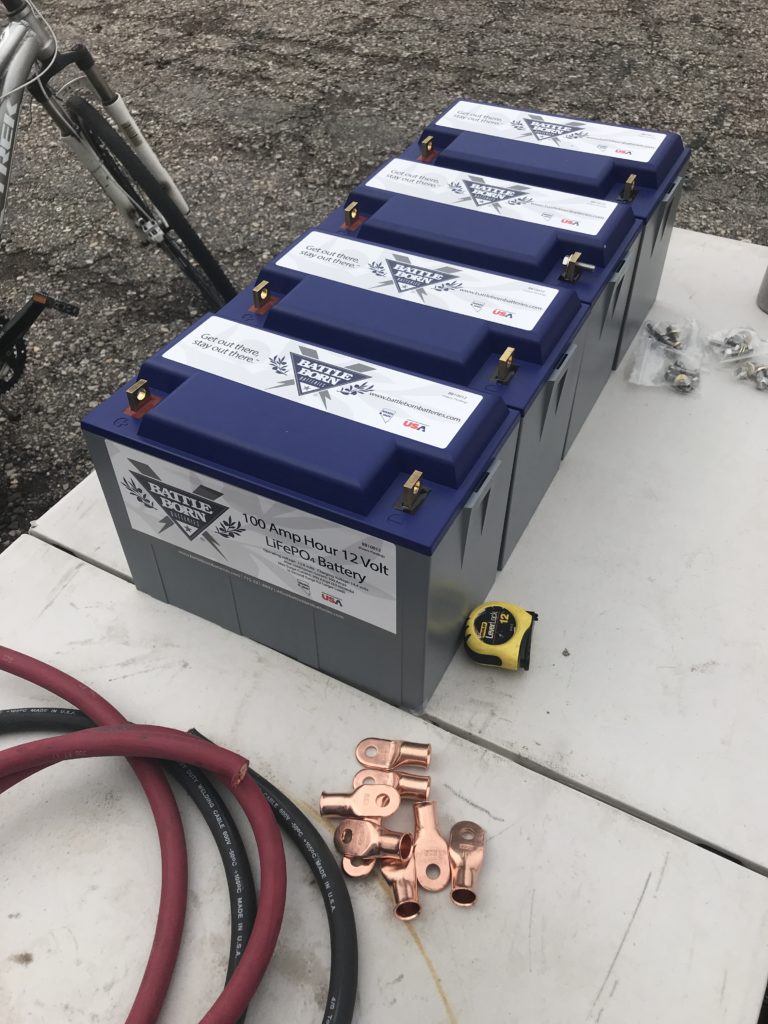
Why did we choose them?
We first met Sean Nichols the CEO and members of his team back in Wellington Texas while we attended Nomadfest in October 2018, and then from there we seemed to run into them all over the southwest at various different RV events. We got to know them, and really appreciated how they embraced the RV community and stood behind their products. Something else that really stood out was the way they give back to the community even helping to raise money for veterans that lost their homes to wild fires in California last fall. For us, the integrity behind a company means a lot, and the overall cost was at or below the rest of the market.
And they offer a 10 year warranty! That gives us a peace of mind in this very expensive purchase.
We know, have met and have talked to many different people that are using their products, and could not find one negative thing to be said about Battle Born Batteries the company, or their products.
So we bit the bullet, and bought the batteries. When I ordered them, I was told that they were on back order, and would be at least a week. But it wasn’t even 5 days and I got my emailed order conformation including tracking.
The batteries were shipped FedEx ground to Moab where we were staying. They completely understood that since we are fulltime Rvers, that our address changes regularly and made the accommodations without question. The packaging was excellent. They were well protected, and came with the necessary hardware to wire them up.
The install!
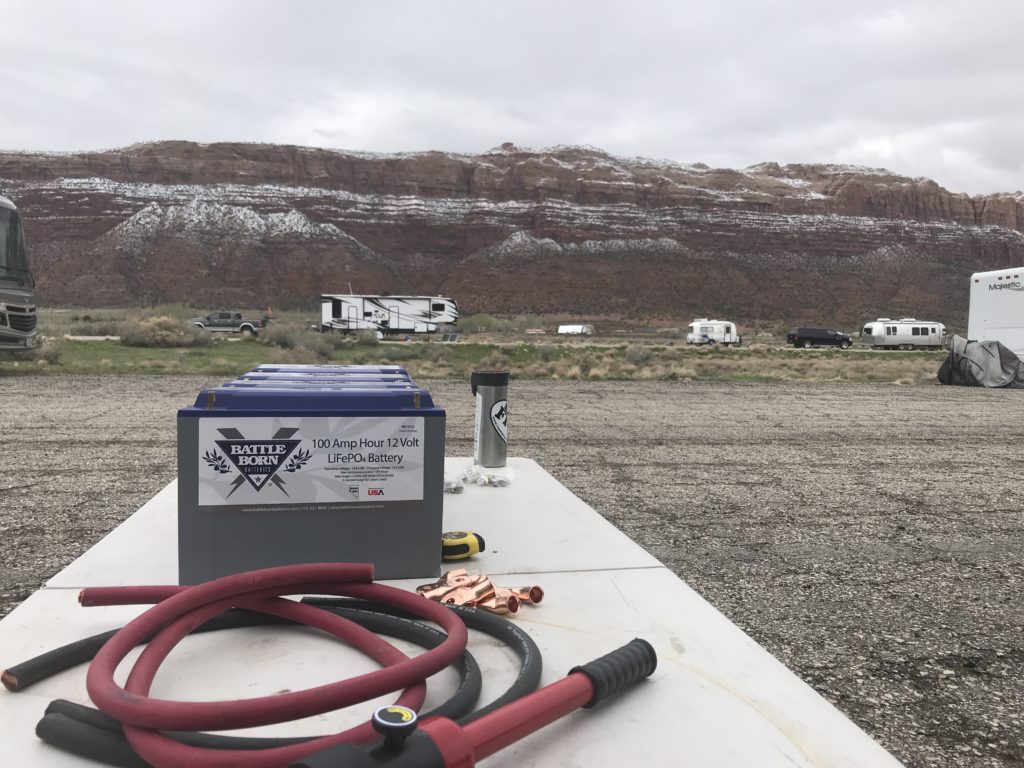
We installed them in April while attending the annual Xscaper’s Convergence in Moab. Again, Sean was there attending and sponsoring the event, and made sure I was completely satisfied with the batteries and my overall experience with them.
The install was super simple and within a couple hours were online. When I installed the batteries, I also upgraded the battery links from 2/0 cable to 4/0 which did add a couple extra steps to the install.
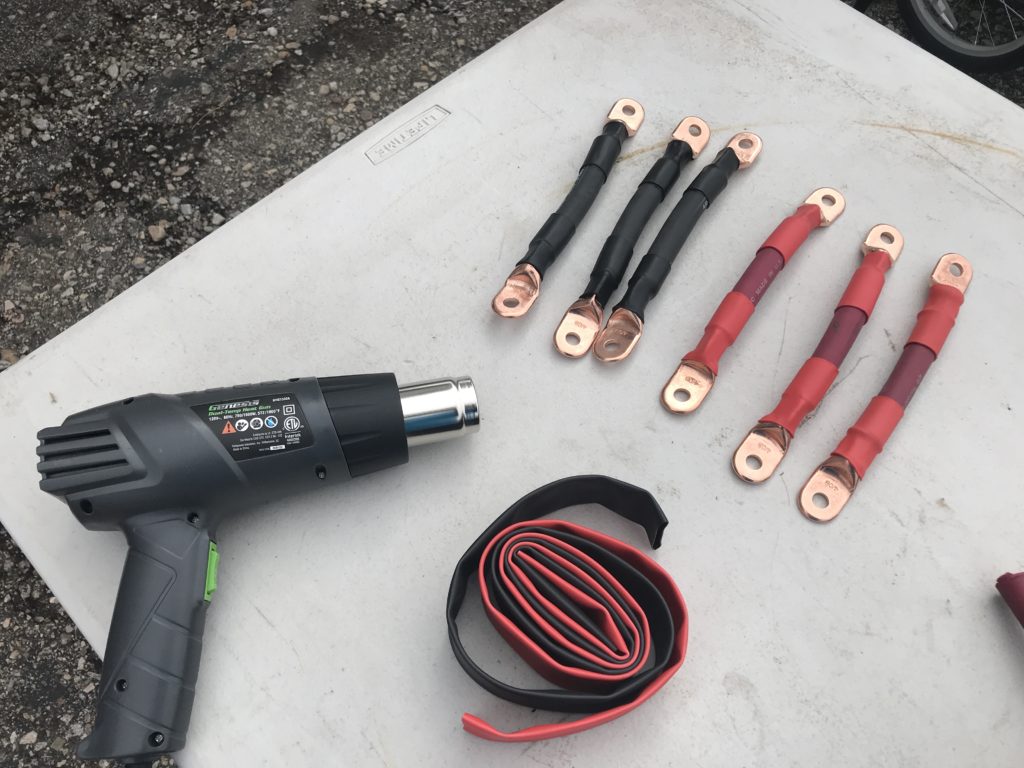
Changing the inverter/charger and solar charge controllers settings and charge curves to accommodate them was a super easy. I found all of the necessary information on Battle Born’s website, it was very simple and done in minutes.
How are they performing?
Since adding them to our system, we have only plugged into shore power one time. We are currently in North Western Montana camp hosting for the summer, and we do not have access to electricity so our generator and solar panels are only source for charging our battery bank.
I wish I could say that they exceeded my expectations, but honestly my expectations were extremely high coming into it. They have definitely performed exceptionally well and met my very high expectations. The thing that has really stood out to me, is the rate of charging.
For the first month we have been here, its rained or been cloudy very often with colder temps. Through that first month, we ran our furnace quite often and typically in the morning, our battery levels are at 30-40%. But we can run our Generator in the morning for an hour or so, and have them almost full again. With the 2 Victron Multi-plus inverter chargers and the existing converter charger we are able to charge at over 100 amps making any generator run time as efficient as possible.
We are running the generator much less than we would have to had we still been using the Trojan T105s. I am pretty confident that as soon as the temperatures remain higher and summer finally arrives, we will not be running the generator very often if at all.
Overall I would say that these batteries are the real deal. The price tag is definitely hard to swallow at first, but if you boondock at all (or plan to) and don’t want to listen to your generator while out in the wild, I would highly recommend Battle Born’s drop in replacement batteries.

